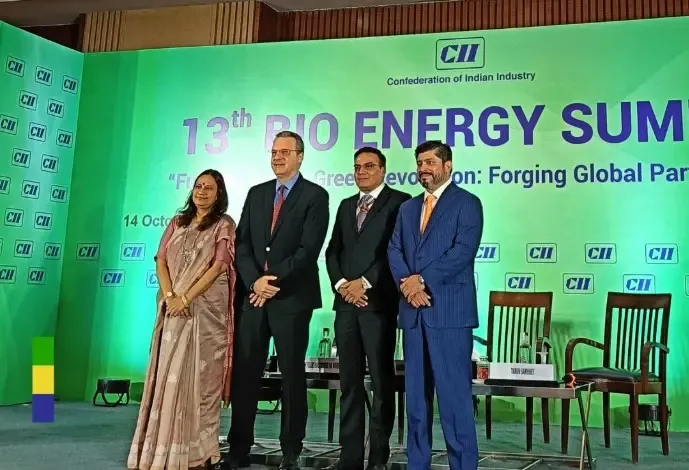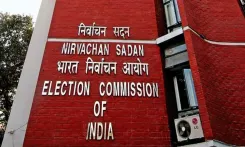Can India Exceed 20% Ethanol Blending?

Synopsis
Key Takeaways
- India is poised to exceed 20% ethanol blending.
- Government initiatives are focused on sustainable supply chains.
- Collaboration with Brazil enhances biofuel strategies.
- Future planning includes options like E27 and E100.
- Sustainable fuels are essential for decarbonizing transport.
New Delhi, Oct 14 (NationPress) A senior government official stated that India possesses the capability to surpass 20 percent ethanol blending. This declaration was made during the 13th National Bioenergy Summit organized by the Confederation of Indian Industry (CII), where notable officials, industry leaders, and international experts emphasized the importance of planning ahead of E20.
Ashwani Srivastava, Joint Secretary at the Department of Food & Public Distribution, reaffirmed the government's dedication to diversifying feedstock and ensuring a consistent supply of ethanol throughout the year.
“India has the potential to exceed 20 percent ethanol blending. We are focused on creating a resilient and sustainable supply chain that benefits both farmers and the industry,” stated Srivastava.
He also highlighted various initiatives underway, including the expansion of grain-based ethanol production, experiments with sweet sorghum as a future biofuel crop, procurement of broken rice from five states, and collaboration with NAFED and NCCF for feedstock aggregation.
The summit emphasized India’s rapid advancements in ethanol blending and the increasing significance of sustainable fuels in reducing carbon emissions across transportation, aviation, and industry.
The recent achievement of 20 percent ethanol blending in India was acknowledged as a significant milestone, made possible through strong policy frameworks, industry investments, and farmer engagement.
Tarun Sawhney, Chairman of the CII National Bioenergy Committee, highlighted the necessity for sustained collaboration between the government and industry to develop globally competitive supply chains.
Sawhney also urged stakeholders to begin planning for future transitions beyond E20, such as E27 or E100, while emphasizing the importance of inclusive discussions.
Additionally, the event reinforced the partnership between India and Brazil, two prominent players in the biofuel sector.
Kenneth Felix Haczynski da Nobrega, the Brazilian Ambassador, remarked on the enhanced cooperation between India and Brazil as global biofuel frontrunners.
“There exists a natural synergy in clean energy innovation between Brazil and India, and we are committed to strengthening this collaboration through the Global Biofuels Alliance,” said da Nobrega.
He showcased Brazil’s innovative flex-fuel vehicle model and carbon credit market for biofuels, inviting Indian stakeholders to consider investment opportunities and joint ventures.
“Approximately 87 percent of Brazil’s light vehicle fleet operates on ethanol. Our experiences with flex-fuel engines, clear regulations, and carbon markets demonstrate that bioenergy can yield both environmental benefits and economic returns,” the Ambassador concluded.









